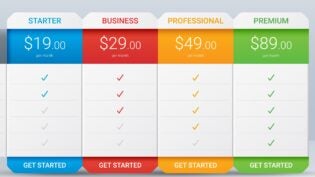
I’ve seen thousands of pitch decks. The vast majority are horrible.
There’s the corporate vanity deck. It always has a lot of slides. Usually it mentions the customer name in about 3 places, on the cover slide, the second to last slide, and the last slide. The rest of the deck is all about the vendor. You are regaled with size, locations, financial performance, logos of customers, and all sorts of stuff telling the customer how wonderful they are and why the customer would be a fool to buy from anyone else.
There’s the product presentation deck. These are huge decks, usually each slide is done in 12 point font, because they have to tell you everything about the product and how wonderful it is. Here too, the customer name is usually on the first, second to last and last slide, but the rest is about the products.
If the customer has days to waste, sometimes the corporate vanity deck and product presentation decks are combined. This is where the term “Death by PowerPoint” was created.
Related Article: How Do You Stop a Sales Person from Talking?
Lately, we’ve become a little more sophisticated with our messaging—we created decks filled with Insight. They’re actually focused on the customer, their needs, their problems, opportunities for them to improve. We want to be customer focused, we want to demonstrate the depth of our knowledge, and we want to teach them.
We rehearse and polish our performance in delivering the Pitch. We know when to pause, how to provoke, when to add humor. We even practice our “ad hoc” pitches on White Boards, perfecting our artistry in delivering the pitch.
This last version of pitch deck is far preferable to the former. But it also has the same problem as the others.
The problem with pitch decks of any sort is they absolve the sales person and the customer of the responsibility of having a conversation.
The engagement in a highly interactive pitch resembles a ping pong game: Pitch-response, Pitch-question, Pitch-response, and on and on. The sales person presents data or a point of view, the customer responds in acknowledgement or asks questions, but there is no real engagement. Data is shared, insight is shared, but it’s very structured and stilted.
Conducting a conversation mandates engagement of all parties by definition, otherwise it’s a monologue. If we engage our customers in conversations each person has a responsibility for the success of the conversation, each person becomes invested in the conversation.
We can’t really fake conversation—that is if we are really listening, present, paying attention and engaging.
But since engagement, at least deep engagement, isn’t a mandatory part of the Pitch Deck, we or the customer can fake it.
Consider walking into the room with a proposed agenda, or agree on the agenda at the outset of the conversation. Beyond that, take paper, pencil, two ears, a brain, a sincere interest in learning, engaging, sharing, listening.
As elegant as our Pitch Decks are, however customer focused they may be, however well-rehearsed they are, they don’t hold a candle to a conversation.












